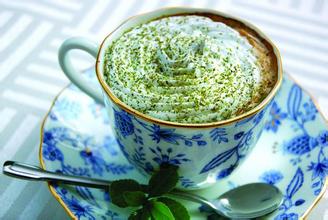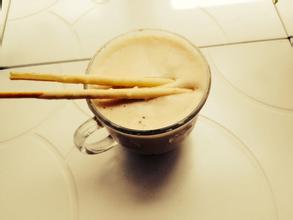Yega Chefevoca Coffee Flavor description, Grinding degree, characteristic Price introduction
The traditional way of tanning in Ethiopia is rough and smelly, which has been criticized by people. In 1959, the South American water washing method was introduced into the Yega Xuefei producing area. Most producing areas generally adopt the water washing treatment, that is, after the coffee fruit is peeled, the pectin layer is removed after fermentation and washing, and then dried.
Since 2006, some coffee processing plants in some producing areas have adopted the exquisite elevated shed sun drying method, which invests in high-intensity human labor, which isolates the coffee fruit from contact with the ground and prevents the miscellaneous smell of soil in the process of sunlight. create an unusually clean fruit flavor. After more than two weeks of sun exposure, dark brown coffee fruits are professionally stored, waiting for the whole flavor to ripen. Before sale, the dried cherry pulp and sheepskin are removed, and then the unripe beans and over-fermented beans are removed. Strict control greatly improves the quality of sun-dried beans.
Yejaschuffe itself is a small town of about 20, 000 people, and the three neighboring producing areas, Wenago, Kochere and Gelena Abaya, are also classified as Yejasuffe because they produce coffee with almost the same flavor as Yejasuffe. Yejacheffe is similar to the neighboring Sidamo in terms of culture and geography, but it seems to be more favored to enjoy the advantageous conditions, top-quality Yega Chefe coffee with floral aromas, bright citrus acidity, lemon flavours and silky taste.
Kochere Cochel is located in southwestern Ethiopia, 25 miles north of the famous town of Yega Chefen. The production model is based on local small farmers sending production batches to cooperatives for unified processing. The local Chalalacktu village has about 100000 people who depend on coffee for a living, and related production activities have become their main source of income. Due to the benefits brought by coffee production, the local standard of living is much better than that of many Ethiopian villages, with sound health facilities, colleges and universities, and so on. Advanced processing equipment makes the coffee in Kochere area always have a high level of performance in the field of washing treatment, with the clean and sweet complex flavors of molasses and citrus.
The grading system of Ethiopian coffee is not based on the number of items, but on the proportion of defective beans in raw beans. In October 2009, Ethiopia launched the ECX boutique coffee trading classification system, and Q-Grader rated raw beans as follows:
Washed Yega Chuefei is divided into two grades: Grade 1 and Grade 2.
Grade 1, Grade 3, Grade 4 and Grade 5 were divided into sun Yega Xuefei.
Grade 1 is the highest grade, that is, Yega Xuefei with the lowest defect rate and the best quality.

Important Notice :
前街咖啡 FrontStreet Coffee has moved to new addredd:
FrontStreet Coffee Address: 315,Donghua East Road,GuangZhou
Tel:020 38364473
- Prev

Yunnan Tieka Coffee Grinding characteristics Variety Flavor description Taste Manor introduction
The western and southern parts of Yunnan Province are located between the 15th latitude and the Tropic of Cancer. Most areas are 1000-2000 meters above sea level. The topography is dominated by mountains and slopes. Here, the land is fertile, the sunshine is sufficient, the rainfall is abundant, and the temperature difference between day and night is large. The unique natural conditions form the special taste of Yunnan small-grain coffee, which is rich but not bitter, fragrant but not strong, slightly fruity. Pu'er in the south and west of Yunnan
- Next

Bolivian Coffee Flavor description characteristics of Grinding degree introduction of varieties in producing areas
Bolivia FTO SHG EP producing country: Bolivia Grade: SHG planting area: Yonggas Brand: Caranavi treatment method: wet treatment appearance: 2dshock 300gr 18SCR 17-18SCR Variety: Tibica Note: this is a lively, light, bright and vibrant coffee. Dry aroma is an unusual nutty aroma, somewhat similar to peanut butter. The wet aroma has vanilla and vanilla
Related
- Detailed explanation of Jadeite planting Land in Panamanian Jadeite Manor introduction to the grading system of Jadeite competitive bidding, Red bid, Green bid and Rose Summer
- Story of Coffee planting in Brenka region of Costa Rica Stonehenge Manor anaerobic heavy honey treatment of flavor mouth
- What's on the barrel of Blue Mountain Coffee beans?
- Can American coffee also pull flowers? How to use hot American style to pull out a good-looking pattern?
- Can you make a cold extract with coffee beans? What is the right proportion for cold-extracted coffee formula?
- Indonesian PWN Gold Mandrine Coffee Origin Features Flavor How to Chong? Mandolin coffee is American.
- A brief introduction to the flavor characteristics of Brazilian yellow bourbon coffee beans
- What is the effect of different water quality on the flavor of cold-extracted coffee? What kind of water is best for brewing coffee?
- Why do you think of Rose Summer whenever you mention Panamanian coffee?
- Introduction to the characteristics of authentic blue mountain coffee bean producing areas? What is the CIB Coffee Authority in Jamaica?

